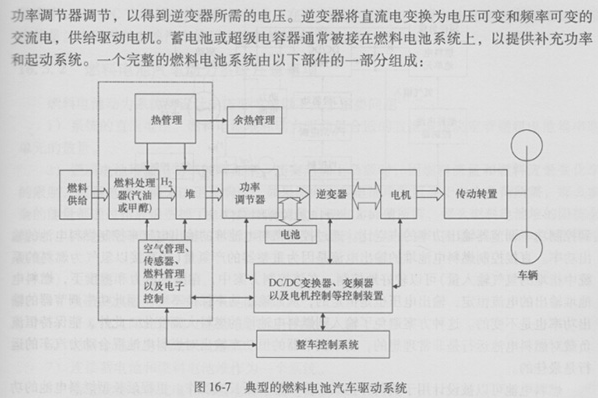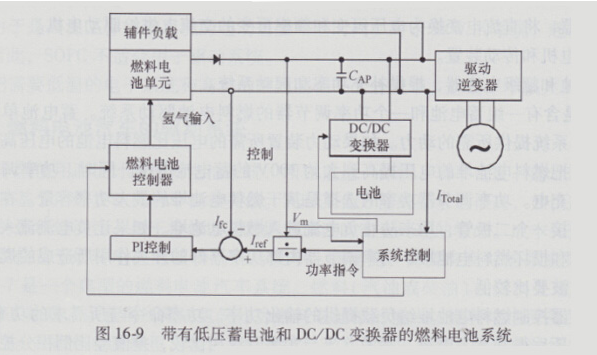Fuel cell cars can also be counted as electric cars, but you can fill the battery with fuel in five minutes instead of waiting a few hours to fully charge. Fuel cell vehicles are also electric vehicles, except that "batteries" are oxy-hydrogen hybrid fuel cells. Compared to conventional chemical batteries, fuel cells can be refueled, usually with hydrogen. Some fuel cells can use methane and gasoline as fuel, but are usually limited to industrial applications such as power plants and forklifts.
A fuel cell vehicle (FCV) is a vehicle powered by electric power generated by an on-board fuel cell device. The fuel used in the on-vehicle fuel cell device is a high-hydrogen reformed gas obtained by reforming high-purity hydrogen or a hydrogen-containing fuel. The difference in power compared to conventional electric vehicles is that the power used by the FCV comes from the on-board fuel cell device, and the electricity used in the electric vehicle comes from the battery that is charged by the grid. Therefore, the key to FCV is fuel cells.
Analysis of the drive system of fuel cell vehiclesFuel cell systems designed for vehicle use must be similar in weight, volume, power density, starting and transient response to today's internal combustion engine-based vehicles. At the same time, other requirements are also high, such as quick start, rapid acceleration, good fuel economy, easy maintenance, and consideration of safe handling of fueling. Cost and life expectancy are also important.
In order to make the fuel cell-based drive system high efficiency and high performance, a good system architecture and control strategy are required. Figure 16-7 is a typical fuel cell automotive system. The fuel (gasoline or diesel) is processed in a fuel processor (also known as a reformer) to obtain the required hydrogen as an input to the fuel cell stack. The oxygen required for a fuel cell is usually from outside air. In a fuel cell stack, hydrogen and oxygen combine to produce direct current and heat. The output voltage of the fuel cell stack is regulated by a power regulator to obtain the voltage required by the inverter. The inverter converts direct current into alternating voltage with variable voltage and variable frequency and supplies it to the drive motor. A battery or supercapacitor is typically connected to the fuel cell system to provide a supplemental power and starting system. A complete fuel cell system consists of a part of the following components:

Figure 16-7 Typical fuel cell vehicle drive system
1) The reformer converts the fuel into a hydrogen-rich gas. If hydrogen is used directly, then a compressed hydrogen storage tank is required.
2) Fuel cell power section. It consists of a fuel cell stack in which hydrogen and oxidant are mixed to produce direct current and heat.
3) An air compressor that supplies pressurized oxygen to the fuel cell.
4) Cooling system to maintain proper operating temperature.
5) Water management system to control the humidity and moisture in the system (maintaining the saturated humidity of the fuel cell membrane while preventing water accumulation in the cathode) o
6) A power regulator to regulate the output voltage of the fuel cell stack.
7) The inverter converts the direct current into a variable voltage and variable frequency alternating current supply drive motor.
8) Drive motor and transmission.
9) Battery and supercapacitor, providing supplemental power and starting system.
Figure 16-8 is a fuel cell drive system containing a set of batteries and a power conditioner. The battery unit and fuel cell stack provide the power required for the drive system. The voltage required for the powering device is higher than the voltage of the fuel cell, and the power regulator must increase the voltage of the fuel cell stack to a battery voltage of approximately 300V. At the same time, the power regulator can also charge the power battery.
The choice of power regulator power is based on the maximum power capacity of the fuel cell stack. A diode is required at the output of the fuel cell stack to prevent negative current from entering the fuel cell stack. If a negative current flows, it can cause the battery to reverse and damage the fuel cell stack. The ripple of the fuel cell stack output current caused by the switching action of the internal power device of the power regulator is relatively low. The power regulator controls the output power provided by the fuel cell stack to the load. The power command is proportional to the power required and is divided by the battery voltage to obtain the reference current. The reference current is compared with the measured current, and the difference is proportional to the proportional controller. Figure 16-8

The fuel cell converter controls the duty cycle to control the output power of the power regulator. The output power of the fuel cell is controlled by controlling the output current of the fuel cell stack. The direct control of the output current of the fuel cell stack is due to the fact that the hydrogen production of the reformer (the hydrogen input in the direct hydrogen-fueled system) can be better controlled, in this control scheme, at a given pressure and At the temperature, the current output from the fuel cell stack is constant, and the output voltage is also constant, so that the output power remains unchanged. Therefore, the output power of the power regulator is also constant.
This approach avoids significant changes in fuel input to the fuel cell stack. In addition, maintaining a constant current load is ideal for fuel cell operation, and the constant power output of the power regulator is optimal for the operation of a fuel cell hybrid vehicle. Fuel cells can be designed for load sharing or mileage extension work. Mileage extended fuel cells have less power and only charge the battery. The battery should be able to provide full power. Because of the good efficiency characteristics of fuel cell units in under-load areas, systems that combine smaller batteries with full-power fuel cell stacks are more attractive. However, if cost is a major concern, then smaller fuel cells and larger battery combinations are better choices. In this kind of. Under the circumstance, a solid oxide fuel cell can be used instead of a proton exchange membrane fuel cell, and the starting time and response time of the fuel cell are not major problems.
Figure 16-9 shows the system structure when the voltage of the battery pack is lower than the inverter bus voltage. Figure c The battery pack is connected to the DC bus of the inverter through a DC7DC converter. When the vehicle is started, the battery pack supplies power to the drive motor by increasing the battery pack voltage. When the vehicle is rapidly accelerating, the fuel cell and the battery collectively supply power to the drive motor. When the vehicle reaches a steady speed, only the fuel cell can provide drive energy (it also charges the battery). In this kind of

Figure 16-9 Fuel cell system with low voltage battery and DC/DC converter
In this case, the DC/DC converter operates in the buck mode. During the regenerative braking process, the battery is charged and the fuel cell does not output energy. The Toyota fuel cell vehicle uses a similar structure.
YUOTO Switch (Dual Flavors) 3000puffs
Yuoto Switch Disposable changes the disposable e-cigarette game by offering tw o different flavors in one device. It is the ultimate2-in-1 disposable with 8 different amazing dual flavor optionsin a conveniently c ompact device. Dual flavors design solves the following problem: The users hoping to try more flavors and costing too much to buy different flavors of disposable pod device. The dual flavor design is a breakthrough in the vape marketYuoto Switch Dispos able kit is powered by a 1650mAh built-in battery. Despite its small size,the durability of the battery pack is more than 50% higher t han similar products, reaching an astonishing3000 vaping puffs. Pre-filled in 8ml of vape liquid and offers a salt nicotine strengt th of 5%(50mg) which lasts longer than any other vape device available on the market and that too in lowest price at our store. Feat ures two 4mL compartments of different flavors of e-liquid and a simple switch on the device bottom. Change flavor by sliding the button in two directions, refuse boring. The dual tank is with a 1.6ohm heating coilno carbonization allows for constant vapor con astant pure taste. The stylish and lightweight Yuoto Switch is activated by suction with an ergonomic flat cigarette holder Just o pen the package and vaping start every vaper could enjoy a better experience while on the go.

3000puffs Vapes,YUOTO switch Vapes,Dual Flavors 3000puffs,YUOTO 3000 Puffs
Shenzhen Kester Technology Co., Ltd , https://www.kesterpuff.com
